South Africa’s largest sweet potato producer has been exporting to the UK, Europe and the Middle East for the past five years, totalling almost 10,000 tons of sweet potatoes last year. Langplaas takes up the baton towards the end of the North Carolina export season.
They’ve been filling that role with aplomb: Gert Janse van Rensburg, managing co-director of the farm which their grandfather established, says UK and European importers are increasingly turning to South Africa towards the end of the US sweet potato season and realizing the benefits.
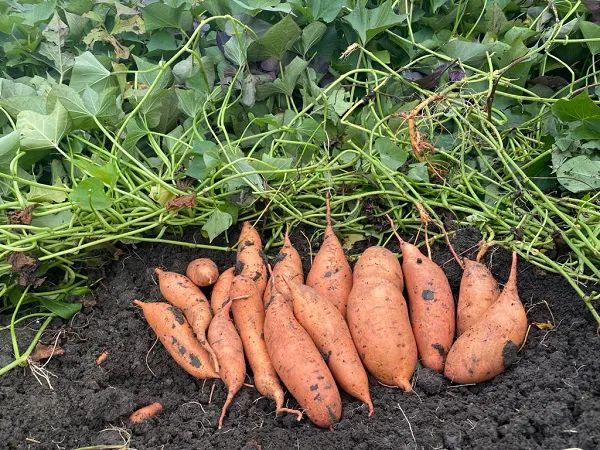
When moisture is managed well, the clay particles in their soil buffer the sweet potato against impacts
Langplaas’ sweet potato exports start in April and continue through their dry winter season, dovetailing nicely into the next USA season.
The colour of the flesh is particularly intense, Gert notes, and the skin has a shine imparted by the black fertile clay soils of the Brits area in the Northwest Province of South Africa.
He observes that sweet potato growers from the United States of America built the sweet potato market in the UK and Europe on good quality. He also maintains that producers in other countries still lack the experience to equal the level of quality of US sweet potatoes.
Driven by varietal innovation
Simon Barnsdale, Langplaas export manager based in the UK, agrees that South African sweet potatoes deserve to be better known. He came to know South African sweet potatoes in his previous position as a sweet potato importer putting together a year-round sweet potato programme for a UK retailer.
“South African imports work really well because our window complements the backend of the USA season. South Africa production allows for a twelve-month quality-driven sourcing model on sweet potatoes, this is needed to support the continued growth the product has seen in recent years,” Simon says.
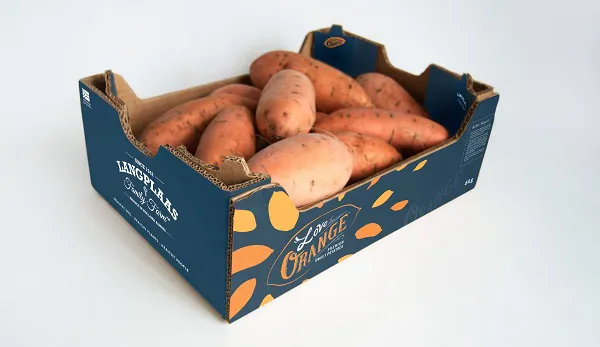
The Love Orange brand of orangefleshed sweet potatoes for the South African market
“It also helps that we’re hugely focused on driving varietal innovation and investing back into our business where we can. Last year we saw the installation of our world-class USA-built optical grader which is the first of its kind for sweet potatoes in South Africa, and will continue to benefit production whilst being the framework for further investments in the coming seasons.”
Trials with 2,500 varieties of sweet potato
In association with Dr Don La Bonte of the Louisiana State University with whom they have a longstanding partnership, Langplaas is intensively testing approximately 2,500 new varieties this season.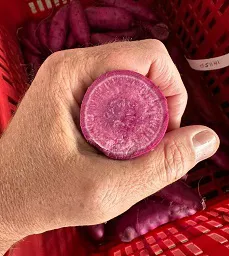 Gert shows samples of the purple-fleshed sweet potato lines which they are testing.
Gert shows samples of the purple-fleshed sweet potato lines which they are testing.
“We would like to develop the orange and purple-fleshed markets in the UK and in Europe. I believe Langplaas will play a role in this development as we are finally seeing promising lines coming through.”
Locally, they will start marketing purple-fleshed sweet potato this season under their brand Love Purple.
Among their new varieties is a white-fleshed sweet potato with unusually high levels of dry matter which, Gert says, tastes like fudge. It’s his new favourite, he remarks, and it will be launched in South Africa as Love Golden sweet potatoes this year.
Taking their cue from their American counterparts, Langplaas cures and stores all of their sweet potatoes, expanding their capacity every year.
During curing starch turns into sucrose, resulting in sweeter sweet potatoes, but it is not at all a common practice in South Africa. In fact, Langplaas could be one of very few sweet potato producers curing all of their product, outside of the USA.
“It has been a real trial and error process for us over the last few years, completing our own research to finesse the method,” Gert remarks.
Pivot towards municipal market
The South African sweet potato market is very different from the UK and European sweet potato market as South Africans have long known and loved white-fleshed sweet potatoes.
They’ve planted more white-fleshed sweet potatoes this year for the domestic market (usually their orange: white flesh ratio is around 2:1). Most white-fleshed sweet potatoes go to municipal markets nationwide. There is more of a niche in South African retail for the 10% of their orange-fleshed sweet potatoes that they don’t export. They supply South Africans with sweet potatoes for twelve months of the year, along with carrots, beetroot, cabbage and green beans.
They supply South Africans with sweet potatoes for twelve months of the year, along with carrots, beetroot, cabbage and green beans.
Gert is keen on getting closer to the consumer, whether that be housewives or restauranteurs.
They had invested heavily in developing niche sweet potato lines with South African retailers but recently have renewed their appreciation for the South African system of local fresh markets.
“Locally we are now much more focused on the municipal fresh markets, often doing better than through retail channels. The national markets are our price discovery mechanism and retailers base their prices on what’s happening at the markets. If the markets were to disappear, retailers would be setting the prices and that’s not what we’d like to see as that will not be beneficial for either producer or consumer – as we currently see with the shortages of fresh produce on retail shelves and higher than necessary inflation.”
They have taken the decision to send their best quality not only to their retail clients, as before, but also to the municipal markets so that independent greengrocers – who, he points out, often are family businesses, like Langplaas – can have quality on their shelves that rival those found in supermarkets.
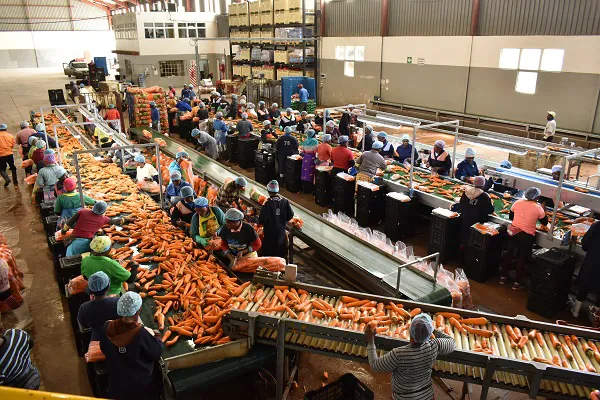
“We try to be a name that is always on the market.”
Class 2 sweet potato tubers that are broken or ill-shaped for the packline, need a home where it doesn’t compete with class 1 product. They are busy developing an extruded sweet potato flour product that could be eaten as a breakfast cereal and do see a future for this value-added super food.
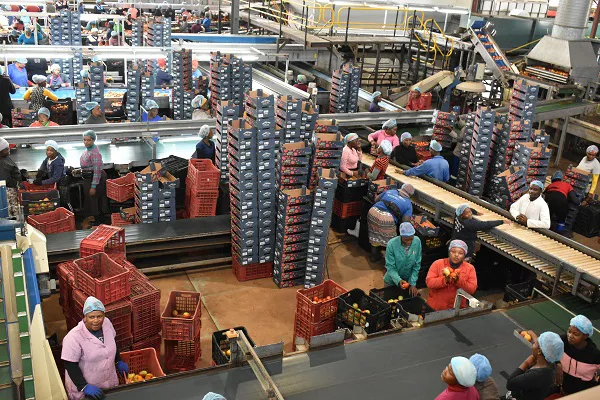
Packing Langplaas tomatoes
Soil carbon level approaching 4%
“We’ve been working for many years on biological hybrid farming practices and our soil carbon percentage touching 4% at places is the highest in this area.”
He explains they’ve done that through the use of organic acids (humic, fulvic and amino acids) which contain complex carbon chains.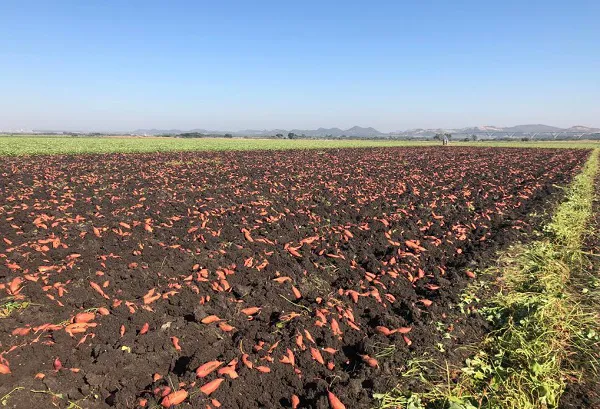
“The way you put down nitrogen can burn away your carbon if applied in the absence of complex carbon chains, so we always place nitrogen (urea) with humic acid which chelates the nitrogen to an organic form. We’d add statically composted chicken manure when we feel it's necessary in order to increase the available phosphate and other trace minerals. We’re looking for higher fungal populations because most agricultural soils are on average bacteria-dominant.”
Pheromones to trap sweet potato weevil males (their biggest pest, especially under hot conditions) have been a game-changer for them, he remarks, and they have been able to reduce chemical spraying significantly.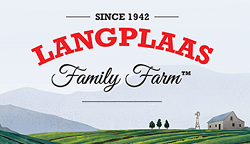 For more information:
For more information:
Langplaas
Simon Barnsdale
Tel: +44 791 285 6240
Email: [email protected]
Gert Janse van Rensburg
Email: [email protected]
https://langplaas.co.za/
